Sun, June 16
Leaving our ship at the small Red Sea port of Safaga, we boarded our coach for the 3-1/2 hour trip through the desert to the Valley of the Kings, crossing the Nile on the way. We had to go in convoy with an armed security guard on each bus. There was more security hidden in the hills that we could not see, so we felt quite safe. There were also numerous police checkpoints to pass through, so if anything were to go amiss, they would be able to locate us.
Our ticket covered visits to any three tombs (of the 62 that are open) and on the advice of our tour guide, we visited Rameses IV, Rameses IX and Rameses III. The latter was the most impressive as it was in the best condition and we could hardly believe our eyes when we walked through this extensive tomb and were able to examine the hieroglyphics in their wonderful colours, much of it still in excellent condition towards the front. Unfortunately salt and water are taking their toll and chunks of render have fallen off here and there and water seepage has removed the colour from the hieroglyphics on the back walls.
We opted not to pay extra to visit the tomb of Tutankhamen as we were told that it was very plain due the removal of the artefacts to the Egyptian museum in Cairo. Most of the tombs are located in close proximity to one another, and fine gravel paths have been laid to make it easy to walk from one to another.
Unfortunately no cameras were allowed and we were advised to leave them in the bus otherwise they could have been confiscated and we may not have gotten them back at all. However there were many vendors selling postcards and we were able to purchase photos of the tombs whilst on the bus.
Next stop was the great Temple of Luxor built about 1400 B.C. and it was absolutely breathtaking to explore the site, taking in the enormous statues and columns. We have seen it many times in books and on television, but nothing takes the place of actually being there taking in this ancient history first hand. Of the two obelisks, only one remains; the other we saw in the Place de la Concorde in Paris last year. Leading from the temple was the Avenue of the Sphinxes – some in surprisingly good condition – which extended quite a long way and was a very impressive sight.
My impressions of Egypt – the contrast between the arid desolation of the desert and the lush green of the Nile Valley, where many people along the banks of the Nile are still farming the way they did in the time of the pharaohs; square apartment blocks and box like houses, in colours blending in to the desert, where the second floor on houses is never completed to avoid having to pay property taxes. Lots of donkeys and mopeds. Vendors wanting you to buy their souvenirs, even after you get back on the bus!
On a final note, with the memory of the recent Australian ban on live export to Egypt in mind, it was reassuring to see donkeys in the fields grazing and all the horses with carts in the streets being fed as we made our way back to the ship in the afternoon.
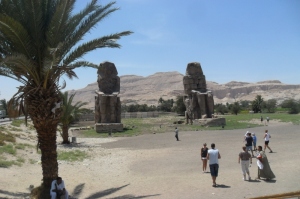

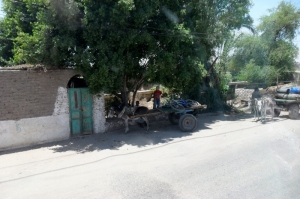


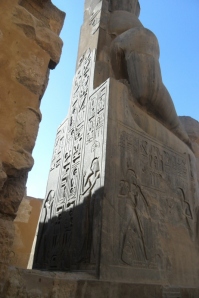

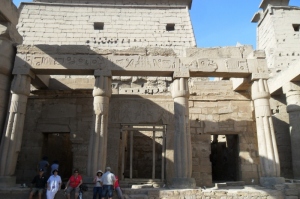
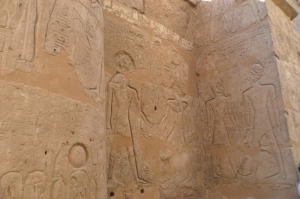



I envy your being able to travel to such a fascinating part of the world. Egypt is one of those places I’ve always wanted to visit. Sadly, even if I had the money (which I don’t), the security situation might make me think twice. I feel bad about thinking this way because I know tourism is a hugely important part of the Egyptian economy, but I’d be lying if I didn’t admit that it’s something I’d take into account.
LikeLiked by 1 person
Bun, thanks so much for visiting my blog! We were so lucky to get to Egypt when we did. It was an experience that I’ll never forget. So amazing. You are right, it is no longer safe which is a real shame.
LikeLiked by 1 person
I have my fingers crossed that in a few years, the political situation in that part of the world will become more stable. 🙂
LikeLiked by 1 person
Me too. Another place I would like to get back to is Turkey but that is off the itinerary for now. I only explored such a small area of the Grand Bazaar – I have lots more shopping to do there!
LikeLiked by 1 person
I hope you get back there one day. 🙂
LikeLiked by 1 person
Loved reading your report on Egypt!
LikeLike
Egypt is a place I’ve always wanted to visit! Great photos, thanks for sharing!
LikeLike